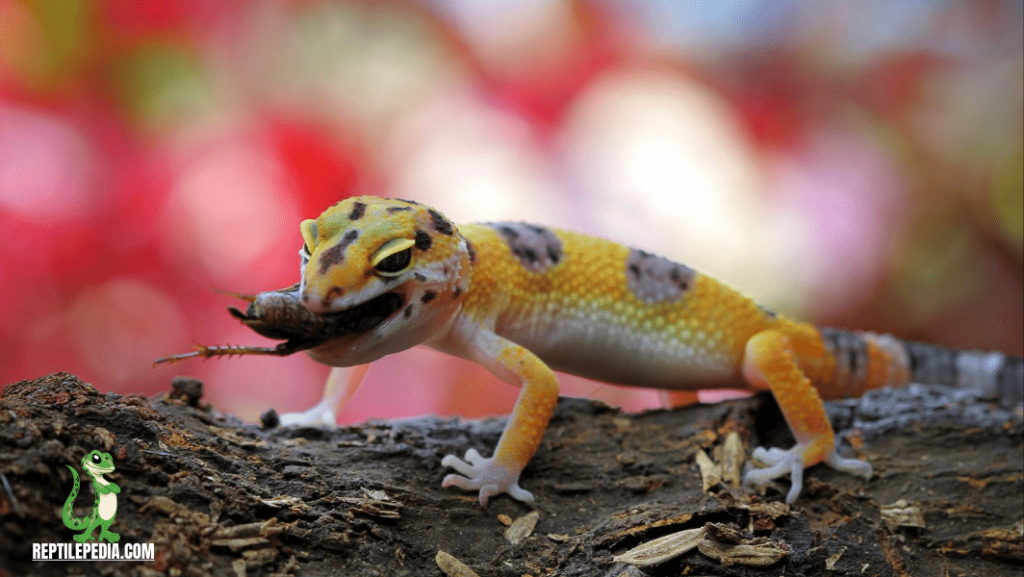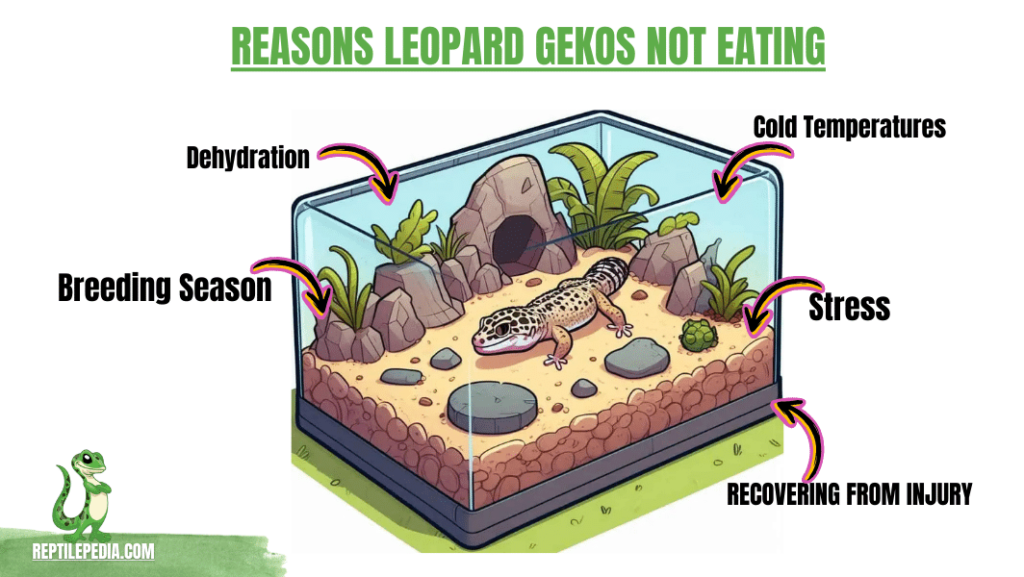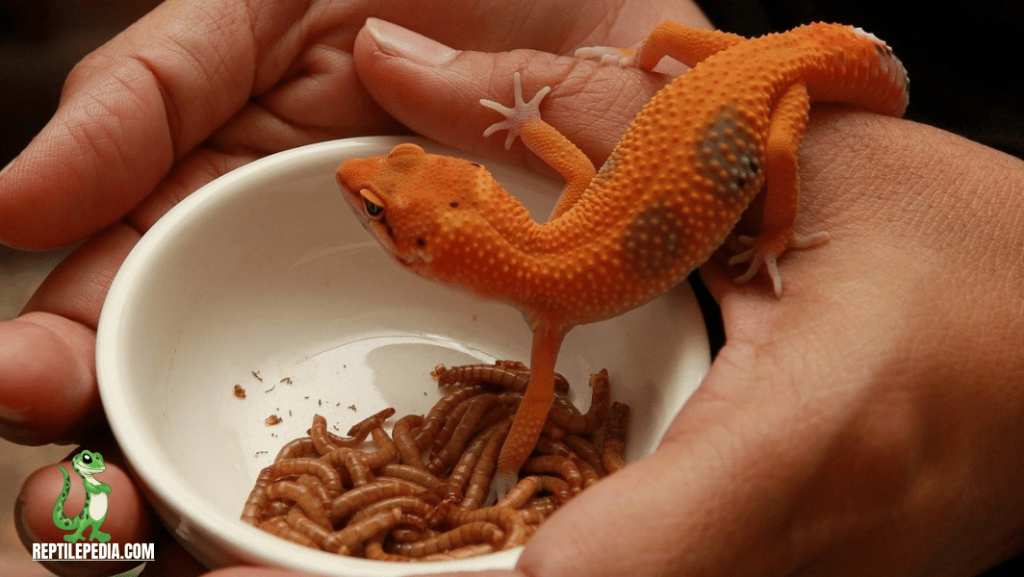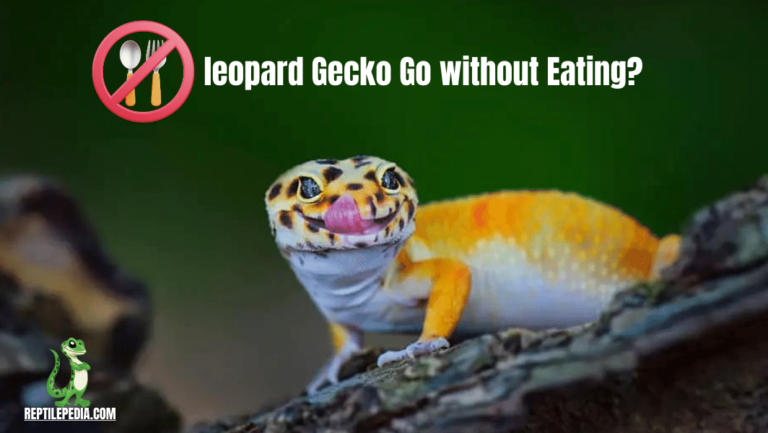When discussing Leopard geckos and their dietary habits, it’s fascinating to note how these creatures adapt to their environments, particularly in terms of how long leopard Gecko go without eating. In captivity, it’s critical to remember that while an adult gecko can safely go without food for about 10-14 days, this doesn’t mean it’s an ideal practice. This resilience stems from their ability to store fat reserves in their tails, providing them with extra energy during lean times.
However, this scenario changes drastically for hatchlings and juveniles. These younger geckos have less developed fat reserves and thus need to eat more often than adults to fuel their growth. In the wild, Leopard geckos can survive for longer periods – even two to three months without food. But in captivity, such extended fasting is not recommended. These fascinating reptiles rely on a consistent supply of nutrition to maintain their health and vigor, especially in a controlled environment where they can’t forage as they would in their natural habitat.
Table of Contents
How Can Leopard Geckos Go So Long Without Eating?
Leopard geckos have a remarkable ability to go long periods without eating, a trait that intrigues many pet owners. This capability is largely due to the fat deposits in their tails, which provide their bodies with essential energy to survive when food is scarce. A fatter and plumper tail indicates more stored fat, allowing the gecko to last longer without food. However, it’s crucial to keep in mind that this is strictly a survival mechanism. For pet leopard geckos, it’s best to always aim for regular and adequate nutrition.
Another fascinating factor at play in their feeding habits relates to their cold-blooded nature. During winter, these reptiles often enter brumation, an equivalent to hibernation. This slows their metabolic processes, allowing them to survive on fewer calories and causes them to eat less. In such a state, they can go up to three months without food. As a reptile enthusiast, understanding these unique adaptations helps in providing the best care for these fascinating creatures.
Optimal Feeding Frequency for Leopard Geckos

When it comes to leopard geckos, understanding their feeding needs is essential. Unlike some reptiles, adult leopard geckos do not require food daily. This is especially true during winter, when their metabolisms slow in response to dropping temperatures. Consequently, they don’t need to eat every day, contributing to their reputation as reasonably low-maintenance pets. Ideally, it’s best to help by feeding them at least once every two or three days. If a leopard gecko doesn’t eat for more than a week, it risks losing weight and becoming weak or ill.
On the other hand, hatchlings and juvenile geckos, as well as sick geckos, should be fed daily to meet their energy requirements. Whatever their age, always ensure they have access to plenty of fresh water, as hydration plays a critical role in their overall health. As a reptile caretaker, it’s vital to adapt to their changing needs, ensuring a healthy and thriving pet.
YOU CAN CHECK FREQUENCY CHART HERE
Why Isn’t My Leopard Gecko Eating?

Like other reptiles, leopard geckos can go lengthy periods without eating, a trait that often surprises new pet owners. However, it’s important to recognize that certain factors or conditions might cause these geckos to refuse to eat or be unable to do so. Common reasons include environmental stress, health issues, or inadequate habitat conditions. As a reptile enthusiast and caretaker, I’ve observed that while it’s uncommon for leopard geckos to skip meals, consistently monitoring their eating habits is vital to ensure they don’t develop any health complications due to prolonged fasting. Regular observation and understanding the unique needs of your leopard gecko can prevent issues related to feeding.
Cold Temperatures
In understanding how reptiles like leopard geckos manage their food intake, it’s essential to consider their cold-blooded nature. These animals do not burn calories to generate body heat, relying instead on external sources such as the sun to raise their body temperature. This adaptation allows them to survive long periods without eating, but it also means that without a proper heat source, they face potential doom.
A leopard gecko that is too cold is unable to digest its meal effectively, which may cause the lizard to opt not to eat altogether. Therefore, it’s crucial to maintain temperatures in your pet’s tank at a suitable level, never going below 75° Fahrenheit. As a reptile enthusiast, I’ve seen firsthand how critical temperature control is for the health and feeding habits of these fascinating creatures.
Impact of Dehydration on Leopard Gecko Feeding
A key aspect often overlooked in the dietary habits of Leopard geckos is the impact of dehydration. These reptiles are particularly averse to eating when dehydrated, emphasizing the need for constant access to fresh water. As a reptile caregiver, it’s my routine to replace the water bowl daily to ensure the lizard does not drink contaminated water. This simple yet crucial step plays a significant role in their overall health and willingness to eat. A well-hydrated leopard gecko is more likely to maintain a regular eating schedule, vital for its health and well-being. Remember, providing your pet with plenty of clean water is as important as offering the right food.
Stress
When Leopard geckos refuse to eat, it’s often a sign of stress, a surprisingly common issue among these reptiles. Stress in leopard geckos can stem from a sudden change in their environment, such as unideal temperatures in their cage or being housed with another gecko. Additionally, illness might be at play, with signs including hiding for lengthy periods, becoming skittish, displaying dull colors, or tail wagging. It’s crucial to Consider a visit to the vet if your gecko displays these symptoms. As a reptile enthusiast, I’ve seen firsthand how sensitive these creatures are to their surroundings and how vital a stress-free environment is for their well-being.
Impact of Breeding Season on Leopard Gecko Appetite
During the breeding season, it’s common to observe Leopard Geckos, especially males, go without food for long periods. This behavior is particularly notable in geckos living north of the Equator, where the breeding season typically starts in January. Keep in mind that even if you’re not planning to breed your gecko, they might still refuse to eat due to their innate need to go through the breeding cycle.
As an experienced gecko keeper, I’ve observed that to prevent your gecko from refusing food, it’s essential to maintain stable temperatures throughout the year and continue to feed them regularly. It’s also advisable not to house males and females together unless breeding is intended. Providing roughly 12 hours of light and dark each day helps mimic their natural environment. If your gecko is refusing to eat, it’s crucial to try to determine the cause and make necessary husbandry changes to remedy the problem.
Lack of Nutrition Become Dangerous for Leopard Geckos?
For Leopard geckos, going longer than 10-14 days without eating can escalate into a risk of weight loss, weakness, and illness. In extreme cases, such prolonged fasting can even lead to death. While these resilient reptiles can survive weeks or even months without food under certain conditions, it’s crucial for their optimal health that this does not become a regular occurrence. Drawing from my expertise in herpetology, I advise that if the two-week mark passes and your gecko hasn’t eaten, it’s time to seek advice from a veterinarian. This is a serious risk sign indicating significant health issues that should not be ignored.
When Should I Feed My Leopard Gecko?

The best time to feed your leopard gecko is either in the early morning or late evening, as these are the times when they are naturally most active in the wild. Drawing from my experience in reptile care, I’ve found that aligning their feeding schedule with their natural circadian rhythms greatly benefits their overall health and well-being. By feeding them during these times, you mimic their natural hunting patterns, which is crucial for maintaining their normal behavior and ensuring their dietary needs are met effectively.
ALSO READ : Can Leopard Geckos Eat Superworms?
How long can a baby leopard gecko go without eating
A baby leopard gecko, unlike adults, has a much more urgent need for regular feeding due to its rapid growth and developmental requirements. Typically, a baby leopard gecko should not go without food for more than 24 to 48 hours. These young geckos are in a crucial stage of growth and require consistent nourishment to ensure proper development, healthy weight gain, and overall well-being.
If a baby leopard gecko goes without eating for more than a couple of days, it can quickly begin to experience health issues, including weight loss, decreased energy, and a weakened immune system. It’s essential to monitor their eating habits closely and provide a diet rich in nutrients. If there are any concerns about a baby leopard gecko’s appetite or health, it is advisable to consult a veterinarian experienced with reptiles.
Final Thoughts:
In captive conditions, it’s crucial to remember that leopard geckos should not go no longer than 10-14 days without eating. While there are instances of individuals surviving weeks or even months, this is not typical and can be detrimental to their health. If your gecko refuses food for a prolonged period of time, it is essential to consider a vet consultation to find out what’s going on. Possible reasons for this fasting could include excessive cold, stress, illness, injury, or dehydration. My experience in reptile care has shown that early intervention is key to addressing any underlying issues and ensuring the health and well-being of these fascinating creatures.
FAQs:
-
Can I leave my leopard gecko alone for a week?
“Yes, you can leave your leopard gecko alone for a week, as they are low-maintenance and can go without food for several days. Ensure a proper setup with adequate water, a clean environment, and a stable temperature before leaving. However, longer absences may require a caretaker for optimal health.”
-
How long can a leopard gecko go without drinking?
“Leopard geckos can typically go for a few days without drinking water, but it’s crucial to provide constant access to fresh water to prevent dehydration. Regularly replenishing their water supply ensures their health and wellbeing, as clean water is essential for their overall care and maintenance.
-
How do I know if my leopard gecko is dehydrated?
To identify dehydration in leopard geckos, look for signs like sunken eyes, dry and wrinkled skin, and a lack of skin elasticity. A dehydrated gecko may also have a loss of appetite and lethargy. Providing a consistent water source and monitoring for these symptoms are key to their health.

